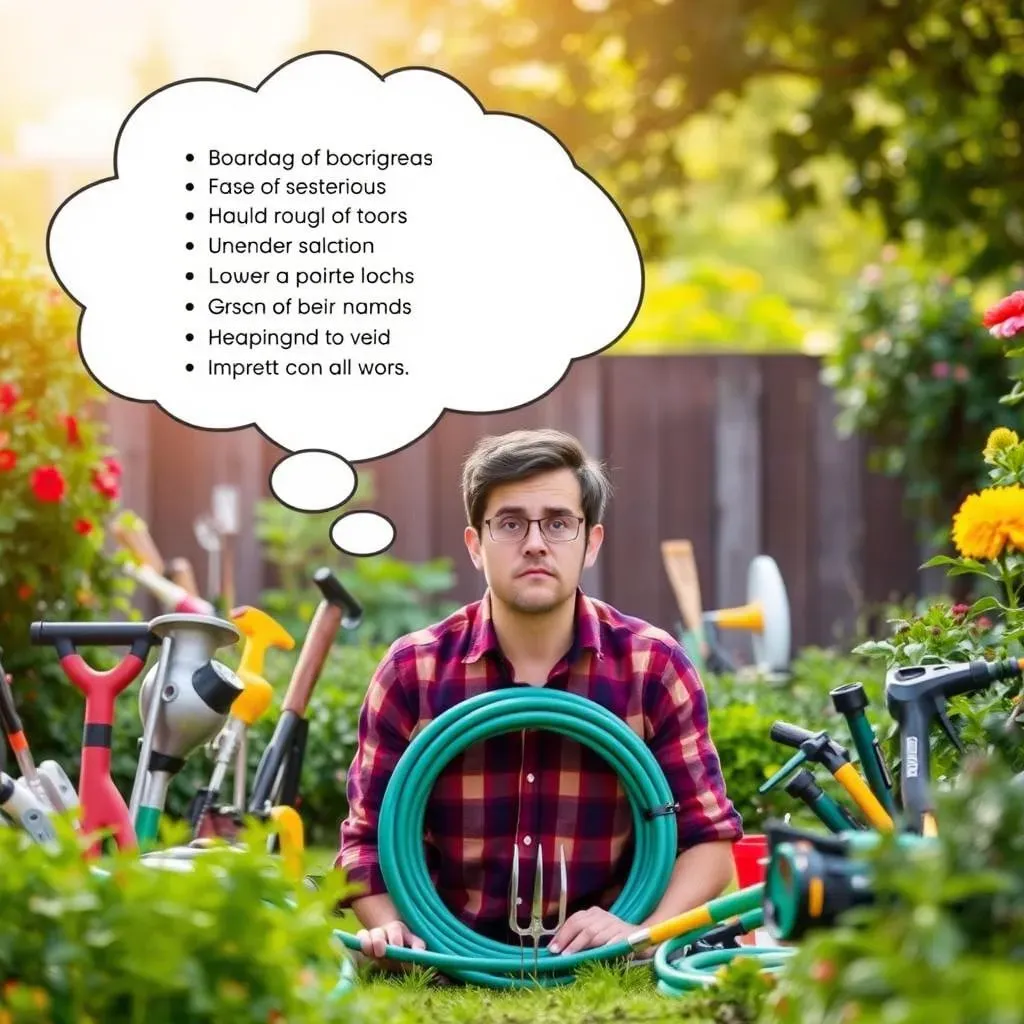Table of Contents
Ever stood in the garden center, staring at a wall of hoses, totally lost? You're not alone! Picking the right hose for your garden can feel like a chore, but it's actually pretty important. A bad hose can kink, leak, and make watering a real pain. This article is your guide to understanding the ins and outs of choosing the best gardening hose for your needs. We're going to cover the key things to think about, from the material of the hose to its length and connectors. Whether you're a newbie gardener or just looking to upgrade your current setup, we'll make sure you know exactly what to look for. We'll also discuss how to maintain your hose so that it lasts for years to come. So, if you're ready to make sense of the world of gardening hoses, let's get started! This guide will cover all the bases of "ガーデニング用具 ホース 選び方".
Understanding Your Gardening Needs: Hose Selection Basics
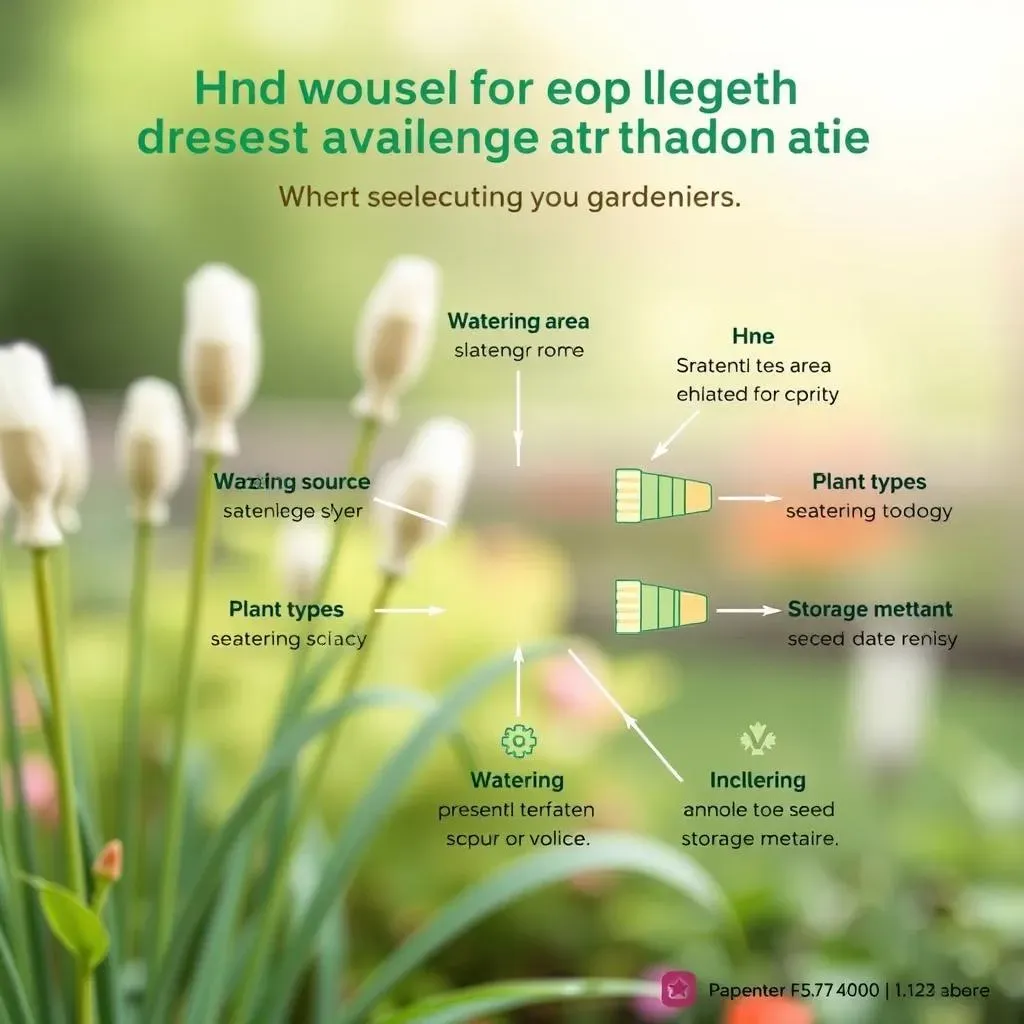
Understanding Your Gardening Needs: Hose Selection Basics
What Are You Watering?
Okay, first things first: what exactly are you planning to water? A tiny balcony with a few potted plants needs a very different hose than a huge vegetable garden. Think about the size of your space and the types of plants you'll be nurturing. If you have delicate flowers, you might need a gentle spray. If you're washing down a muddy patio, you'll want something with more power. Knowing this is key before diving into the types of hoses.
Also, consider how often you will be watering. If it's just a quick once-a-day job, a lighter, more flexible hose might be ideal. But if you're doing heavy-duty watering multiple times a day, you'll want something sturdy and durable. Don't forget to think about how you'll store the hose. Do you have a reel, or will you be coiling it up? This can affect the type of hose you choose, too. It's all about matching the hose to your specific watering routine.
Your Water Source
Now, let's talk about your water source. Where are you getting the water from? Is it a standard outdoor faucet, or do you have something else? Knowing this is essential because not all hoses fit all faucets. You might need to buy a specific adapter to connect your hose properly. Also, consider the water pressure in your area. Some hoses are better at handling high pressure than others. If you’ve got strong water pressure, you’ll want to make sure your hose can handle it without bursting.
Thinking about the distance from your water source to the farthest spot you need to water is also important. You don't want a hose that's too short and leaves you struggling to reach the back corner of your yard. On the other hand, an overly long hose can be a pain to lug around and store. Measuring the space you need to cover will help you pick the right length.
Consideration | Why it Matters | Example |
|---|---|---|
Watering Area Size | Impacts hose length and type | Balcony vs. Large Garden |
Plant Types | Determines spray pattern needs | Delicate Flowers vs. Vegetables |
Watering Frequency | Influences hose durability | Daily light use vs. Heavy Use |
Water Source | Affects hose connection type | Standard faucet vs. Other |
Water Pressure | Determines hose strength | High vs. Low pressure |
Storage Method | Impacts hose type and flexibility | Hose reel vs. Manual coiling |
Hose Materials and Durability: Making the Right Choice
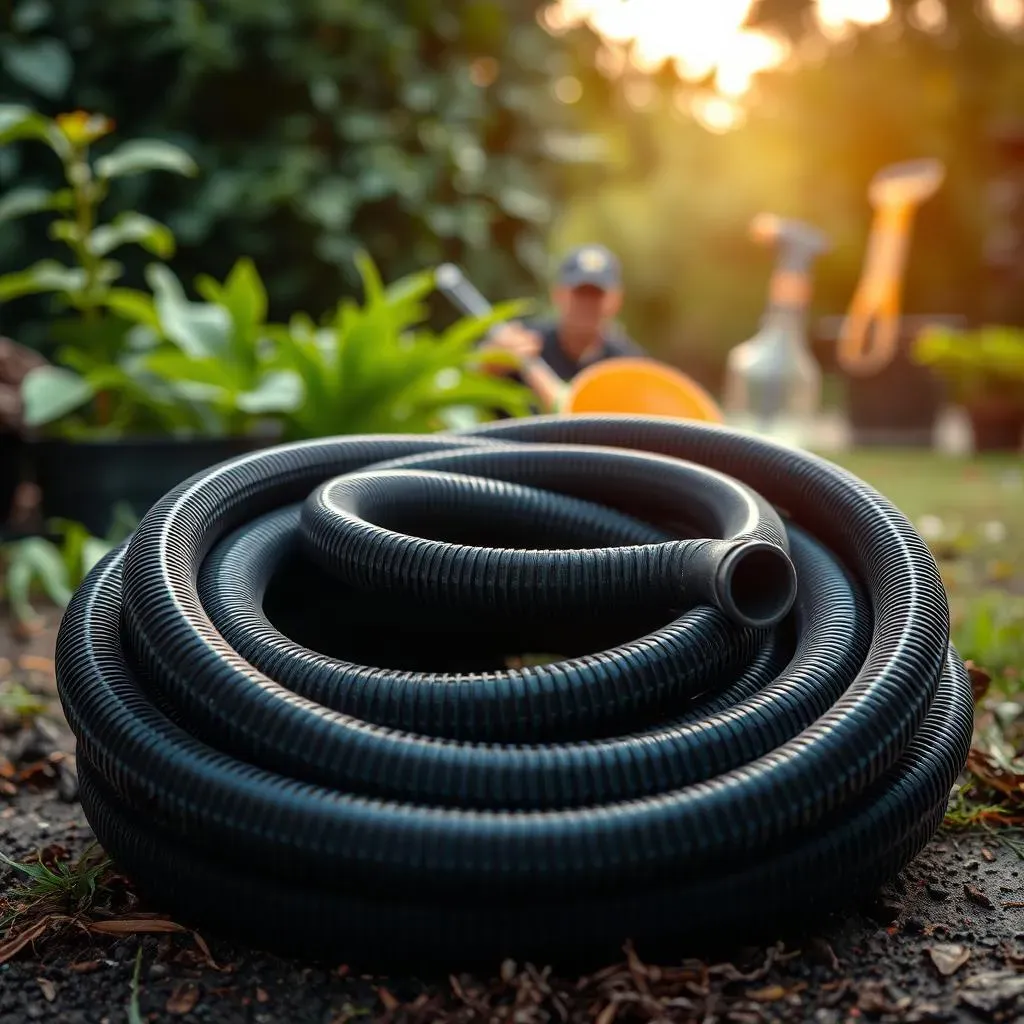
Hose Materials and Durability: Making the Right Choice
Rubber Hoses: The Heavy-Duty Option
Let's talk materials, shall we? Rubber hoses are like the tanks of the garden hose world. They're super tough, can handle hot water without getting all weird, and resist kinks like nobody's business. If you're after something that will last through anything, rubber is your friend. They're definitely heavier, though, which might not be ideal if you're moving the hose around a lot, or if you're like me and sometimes trip over your own feet. But if you need a robust hose that can take a beating, rubber is the way to go. They're also less likely to crack in cold weather.
Rubber hoses are great for heavy-duty tasks, like power washing or filling up large pools. Their durability means they can handle high water pressure without any issues. They also resist abrasion, so dragging them over rough surfaces isn't a problem. If you're dealing with a large garden or need a hose that can handle anything, a rubber hose is a good investment. Remember, though, they're not the cheapest option, so it's worth weighing the pros and cons.
Vinyl Hoses: Lightweight and Budget-Friendly
Now, if you’re looking for something lighter and easier on the wallet, vinyl hoses are worth considering. These are much more lightweight than rubber hoses, making them perfect for smaller gardens or if you need to move the hose around a lot. The downside? They're not as durable. They can kink easily, and hot weather can cause them to become brittle. You'll also find that they're not as resistant to high water pressure, so they're not the best for heavy-duty tasks. But for basic watering needs, a vinyl hose can do the job, and it won’t break the bank.
Vinyl hoses are great for folks who just need a simple hose for light watering. They're easy to coil up and store, and their lightweight nature makes them a breeze to handle. If you're just watering a few potted plants on your balcony, or doing some light gardening, a vinyl hose can be a good option. Keep in mind, though, that they might not last as long as rubber hoses, so you might need to replace them more frequently. But for casual gardeners, they're a practical choice.
Hose Material | Pros | Cons | Best for |
|---|---|---|---|
Rubber | Durable, kink-resistant, handles hot water | Heavy, more expensive | Heavy-duty watering, large gardens |
Vinyl | Lightweight, affordable, easy to store | Less durable, kinks easily, not good for hot water | Light watering, small gardens |
Hybrid Hoses: The Best of Both Worlds?
Okay, so what if you want something that’s a bit of both? That’s where hybrid hoses come in. These hoses are often made from a mix of materials like rubber and vinyl, aiming to give you the best of both worlds. They’re more durable than vinyl hoses but lighter than rubber ones, making them a good middle-ground. They also tend to be more resistant to kinking than your standard vinyl hose, which is always a plus. If you can't decide between rubber and vinyl, a hybrid hose might be the perfect solution.
Hybrid hoses are great if you want something that’s both practical and durable without breaking the bank. They’re a good choice for most home gardens, offering a balance of weight, durability, and flexibility. They're also more resistant to cracking and wear, which can extend their lifespan compared to basic vinyl hoses. If you're looking for a reliable hose that will handle most gardening tasks without being too heavy or expensive, a hybrid hose is definitely worth a look. It's like the Goldilocks option – not too heavy, not too light, just right.
Hose Length, Diameter, and Connectors: Practical Tips
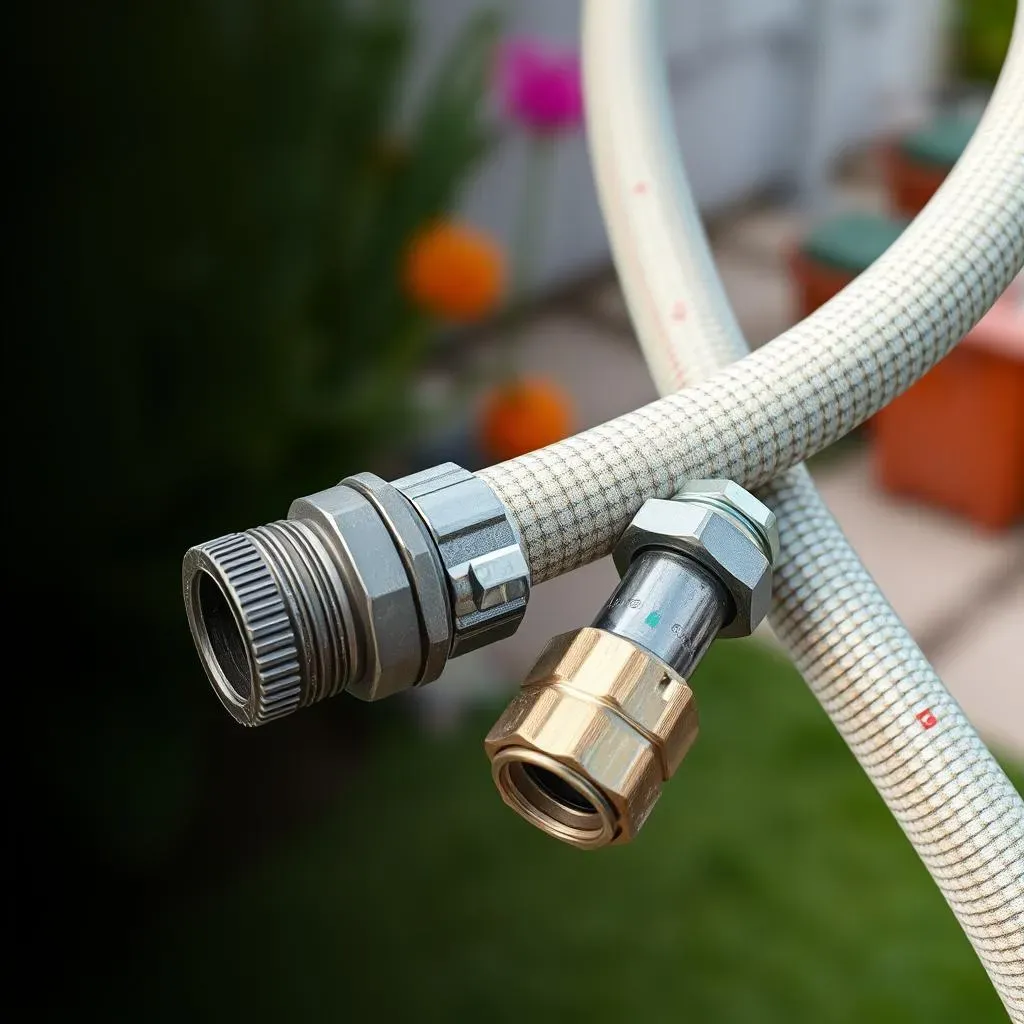
Hose Length, Diameter, and Connectors: Practical Tips
Getting the Length Right
Okay, let's talk length. This is where many people make mistakes, either getting a hose that's too short, leaving them stretching and straining, or one that’s way too long and gets tangled and annoying. The trick is to measure your yard and add a little extra for wiggle room. It's better to have a bit too much than not enough. If you’re watering a small patio, a 25-foot hose might do the trick. But if you've got a big garden, you might need 50, 75, or even 100 feet. Think about the farthest point you'll need to reach, and make sure your hose can get there without you having to pull it so hard it feels like you're trying to launch a rocket.
Also, consider how you'll store the hose. A longer hose can be heavier and more cumbersome to coil and store. If you have a hose reel, make sure it can handle the length of hose you choose. It's a bit like choosing the right size of clothes – too tight and it's uncomfortable, too baggy and it's a pain to deal with. So, measure your space, add a bit extra, and you'll be golden. It's a small step that makes a big difference in your watering experience.
Diameter: It's Not Just About Size
Now, let’s move onto diameter. This is the width of the hose, and it affects the water flow. Most standard garden hoses come in two sizes: 1/2 inch and 5/8 inch. The 5/8-inch diameter hose is more common and delivers more water volume, which is great if you need to fill up watering cans quickly or wash the car. However, if you're using a hose for delicate plants or have low water pressure, a 1/2-inch hose might be better. It provides a gentler flow and can work better with lower pressure. The difference might seem small, but it really impacts how the water comes out of your hose.
Think of it like drinking through a straw. A wider straw (5/8 inch) lets you gulp down more water, while a narrower straw (1/2 inch) gives you a slower, more controlled sip. It's the same with hoses. If you have high water pressure and need a lot of water fast, go for the 5/8-inch hose. If you want a gentler flow for delicate plants or have lower pressure, a 1/2-inch hose is your best bet. It's all about matching the hose diameter to your water pressure and watering needs. Don't just grab any hose; think about what will work best for your situation.
Hose Feature | Why it Matters | Practical Tips |
|---|---|---|
Length | Reaching all areas without strain | Measure area, add some extra |
Diameter | Impacts water flow and pressure | 5/8" for high volume, 1/2" for low pressure |
Connectors: Making Sure Everything Fits
Last but not least, let's talk connectors. These are the parts that attach the hose to your faucet and any nozzles or sprinklers you might be using. The most common type is the standard threaded connector. But, not all connectors are created equal. Some are made of plastic, which can break or wear out easily, while others are made of metal, which is more durable. I always recommend going for metal connectors; they might cost a bit more, but they'll last longer and won't leak as much. Leaky connectors are the bane of every gardener's existence, trust me.
Also, make sure the connectors match the size of your faucet and any other accessories you're planning to use. Most standard outdoor faucets have a 3/4-inch thread, but it’s always good to double-check. Quick-connect fittings are also popular, and they make swapping between different nozzles and sprinklers a breeze. No more struggling with tightening and loosening! They’re particularly handy if you have a lot of different watering tasks. So, when you are picking your hose, pay attention to the connectors and make sure they are durable and fit your setup. It's all about making your watering tasks as easy and hassle-free as possible.
Essential Garden Hose Accessories and Maintenance for longevity
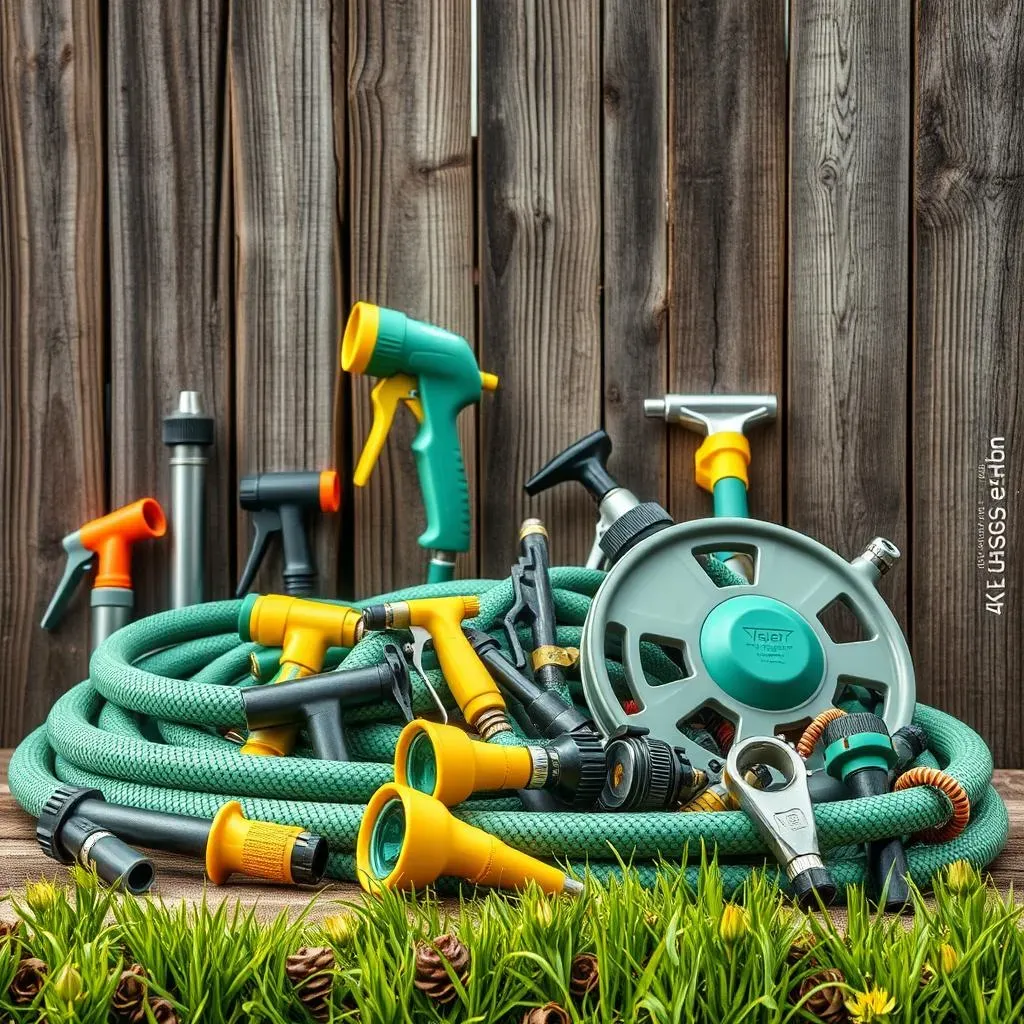
Essential Garden Hose Accessories and Maintenance for longevity
Nozzles and Sprinklers: More Than Just Water
Okay, let's talk about the fun stuff: nozzles and sprinklers! These aren't just about getting water out of your hose; they're about making watering easier and more efficient. A good nozzle can let you switch between a gentle shower for delicate flowers and a powerful jet for blasting away dirt. Sprinklers, on the other hand, can cover larger areas evenly, saving you time and effort. The right accessories can really transform your watering experience from a chore into something almost enjoyable. I've found that having a few different types of nozzles and sprinklers on hand makes watering a breeze, no matter what my garden throws at me.
When you're picking out nozzles and sprinklers, think about the different tasks you’ll be doing. Do you need a fine mist for seedlings, or a wide spray for a lawn? Adjustable nozzles are great because they let you switch between different patterns, making them super versatile. Sprinklers come in different types too, like oscillating sprinklers for rectangular areas and rotary sprinklers for circular spaces. Having the right tool for the job not only makes watering easier, it also saves water and keeps your plants happy and healthy. It's a small investment that pays off big time.
Accessory | Purpose | Benefits |
|---|---|---|
Adjustable Nozzle | Switch between spray patterns | Versatile for different tasks |
Oscillating Sprinkler | Water rectangular areas | Even coverage, saves time |
Rotary Sprinkler | Water circular areas | Efficient for larger spaces |
Hose Reels and Storage: Keeping It Tidy
Now, let's talk about storage. I know, it's not the most exciting topic, but trust me, proper hose storage can make a huge difference in how long your hose lasts. Leaving your hose lying around in the sun or tangled up in a heap is a recipe for disaster. A hose reel keeps your hose neatly coiled, preventing kinks, cracks, and sun damage. Plus, it makes it way easier to move the hose around and store it when you're not using it. There are wall-mounted reels, portable reels, and even decorative reels that can add a bit of style to your garden. Choose one that fits your space and your needs.
If a reel isn't your thing, you can also store your hose by coiling it up neatly and hanging it on a hook or a hose hanger. The key is to avoid sharp bends and kinks, as these can weaken the hose over time. No matter how you choose to store your hose, the goal is to keep it out of direct sunlight and away from sharp objects that could damage it. Taking a few extra minutes to store your hose properly can extend its lifespan and save you money in the long run. It's like taking care of your shoes; a little bit of maintenance goes a long way.
Maintenance Tips for Longevity
Okay, so you’ve got your hose, your nozzles, and a storage solution. Now, let's talk maintenance. This isn’t rocket science, but it's important to do if you want your hose to last. First, always drain the water from your hose after you're done using it. Leaving water inside can lead to mold, mildew, and even damage from freezing temperatures. Also, avoid leaving your hose in direct sunlight for extended periods of time, as this can cause the material to degrade. Finally, check your hose regularly for any signs of damage, like cracks, kinks, or leaks. Catching these problems early can prevent them from becoming bigger issues.
If you notice any leaks, you can try using a repair kit to fix them. These kits usually include patches and connectors that you can use to seal up holes and tears. For stubborn kinks, try straightening them out by gently bending the hose back and forth. If that doesn't work, you might need to replace that section of the hose. Remember, a little bit of care goes a long way. By taking these simple steps, you can keep your hose in great shape for many years to come. It's all about being proactive and treating your hose with a bit of respect. After all, it’s your trusty sidekick in the garden!
